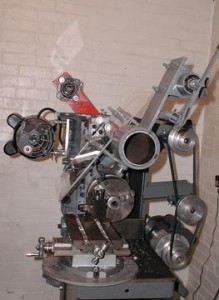 Brandenburg Concerto number 3, probably my favorite: first movement, second movement, third movement. For the third Brandenburg, Bach didn't really write a second movement. He just wrote a couple of chords and allowed the musicians to improvise whatever they wanted within that minimal harmonic constraint. Different groups do different things with that freedom. The first time I heard this concerto was Walter Carlos's rendition on the Switched-on Bach album back in the seventies, which included a lot of interesting sounds that people now associate with old bad sci-fi movies. But at the time, Carlos was one of the first explorers of electronic music and there wasn't yet an esthetic for it. In a later recording Carlos did something a bit more conventional, a minimal expansion on Bach's two chords with just a few flourishes.
Brandenburg Concerto number 3, probably my favorite: first movement, second movement, third movement. For the third Brandenburg, Bach didn't really write a second movement. He just wrote a couple of chords and allowed the musicians to improvise whatever they wanted within that minimal harmonic constraint. Different groups do different things with that freedom. The first time I heard this concerto was Walter Carlos's rendition on the Switched-on Bach album back in the seventies, which included a lot of interesting sounds that people now associate with old bad sci-fi movies. But at the time, Carlos was one of the first explorers of electronic music and there wasn't yet an esthetic for it. In a later recording Carlos did something a bit more conventional, a minimal expansion on Bach's two chords with just a few flourishes.One thing I never quite got about the first Brandenburg (first, second, third, fourth movements) is some funny work in the horns in the first movement. There are points where they just seem off-tempo with everybody else. When I first heard this I assumed the musicians had gotten lost. But now I'm hearing it in this second recording, so I have to conclude that Bach wrote it that way. Maybe he was trying to make sure the listener was awake? Perplexing.
I once read a review of the sixth Brandenburg (first, second, third movements) suggesting that it was a musical description of goings-on in the Bach household. Bach had lots of kids, all presumably running and bouncing about as kids will do, and this is a very busy concerto with a lot happening. So that might be what Bach had in mind, and it especially sounds that way in the third movement which has a real bounce to it. In this recording the cellos (maybe basses? I'm never sure) at the right end seem to have many more than four strings.
